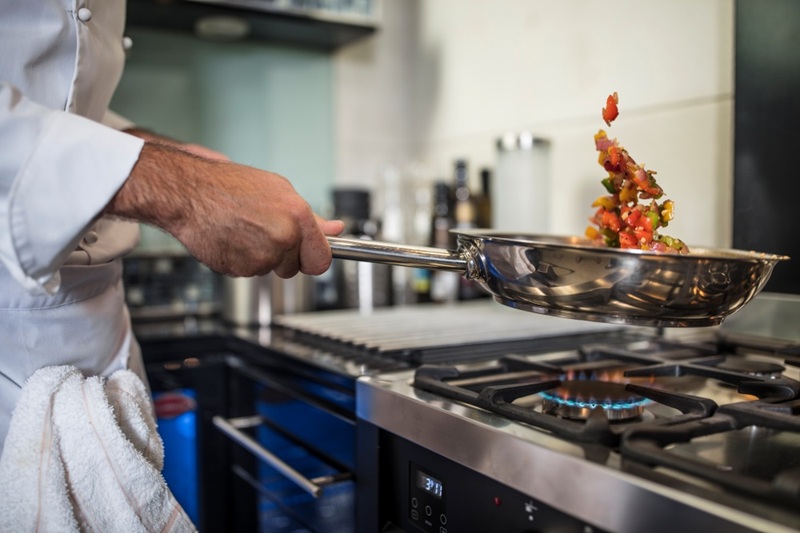
Restaurant kitchen appliances form the backbone of any successful food service establishment, serving as the critical infrastructure that transforms raw ingredients into culinary masterpieces. Just as early humans developed tools to revolutionise their relationship with food, modern restaurateurs must carefully select and maintain their equipment arsenal to survive in Singapore’s competitive dining landscape.
The Evolution of Commercial Kitchen Technology
The journey from primitive cooking methods to today’s sophisticated kitchen equipment mirrors humanity’s broader technological evolution. What began with simple heat sources and basic tools has transformed into an intricate ecosystem of precise, efficient, and interconnected appliances. In Singapore’s dynamic food scene, where labour costs continue to rise by approximately 3-5% annually, investing in the right equipment has become a matter of survival rather than choice.
The Foundation: Primary Cooking Equipment
The heart of any commercial kitchen lies in its primary cooking apparatus. Like the discovery of fire that changed human history, these core appliances define a kitchen’s capabilities:
- Commercial ranges and ovens serve as the command centre, offering versatility for multiple cooking methods and temperatures, with modern units reducing energy consumption by up to 30% compared to decade-old models
- Combination ovens represent the pinnacle of cooking evolution, combining dry heat, steam, and convection to handle up to 60% of all cooking tasks in a single unit
- Griddles and charbroilers provide the essential connection to our primal cooking roots, delivering the distinctive flavours that humans have craved for millennia
Critical Support Systems: Refrigeration and Storage
According to Singapore’s National Environment Agency, proper food storage temperatures are crucial for food safety, with violations leading to fines of up to $2,000. Modern refrigeration systems have evolved to meet these stringent requirements:
- Walk-in coolers and freezers serve as artificial micro-climates, preserving ingredients at precise temperatures
- Blast chillers rapidly cool hot foods through the danger zone (60°C to 5°C) within 90 minutes, significantly reducing bacterial growth
- Prep tables combine storage and workspace, reflecting the modern emphasis on efficiency in kitchen design
The Washing Revolution
The Singapore Food Agency reports that poor sanitation contributes to approximately 14% of food poisoning cases annually. Commercial washing equipment has evolved to address this challenge:
- High-temperature dishwashers that achieve sanitisation through 82°C water, eliminating 99.999% of harmful bacteria
- Glass washers specifically designed to handle delicate items whilst maintaining optimal cleanliness
- Pot and pan washers that save an estimated 120 labour hours per month compared to manual washing
The Rise of Smart Kitchen Technology
Just as smartphones revolutionised human communication, smart kitchen equipment is transforming commercial food preparation. Singapore’s Smart Nation initiative has encouraged the adoption of connected kitchen appliances, leading to:
- Equipment with predictive maintenance capabilities, reducing downtime by up to 30%
- Energy management systems that can cut utility costs by 15-20%
- Automated inventory tracking systems that reduce food waste by up to 25%
Essential Considerations for Equipment Selection
When selecting kitchen equipment, one must consider both immediate needs and future adaptability, much like early humans choosing tools that could serve multiple purposes:
- Energy efficiency ratings and operating costs
- Space utilisation and workflow optimisation
- Maintenance requirements and local service availability
- Compatibility with existing systems and future expansion plans
The Future of Commercial Kitchens
As we stand on the brink of another technological revolution, the future of commercial kitchens promises even greater innovation. Singapore’s commitment to sustainability has led to new requirements for energy-efficient equipment, with grants covering up to 70% of costs for green kitchen technologies. The integration of artificial intelligence and robotics suggests a future where kitchen equipment not only cooks food but learns and adapts to changing conditions.
Maintenance and Longevity
Like any complex system, commercial kitchen equipment requires regular maintenance to ensure optimal performance. Studies from Singapore’s restaurant association indicate that proper maintenance can extend equipment life by 40-50% and reduce energy consumption by up to 25%. Regular calibration and cleaning protocols are not just regulatory requirements but investments in long-term operational success.
In conclusion, the careful selection and maintenance of restaurant kitchen appliances represents one of the most crucial decisions a food service operator can make. Just as our ancestors’ relationship with tools shaped human evolution, modern restaurants’ relationship with their equipment will determine their ability to thrive in an increasingly competitive marketplace.






More Stories
What Makes Jute Carpets Eco-Friendly?
Understanding the Purpose and Benefits of Concrete Polishing
Effectively Saving For any New Kitchen